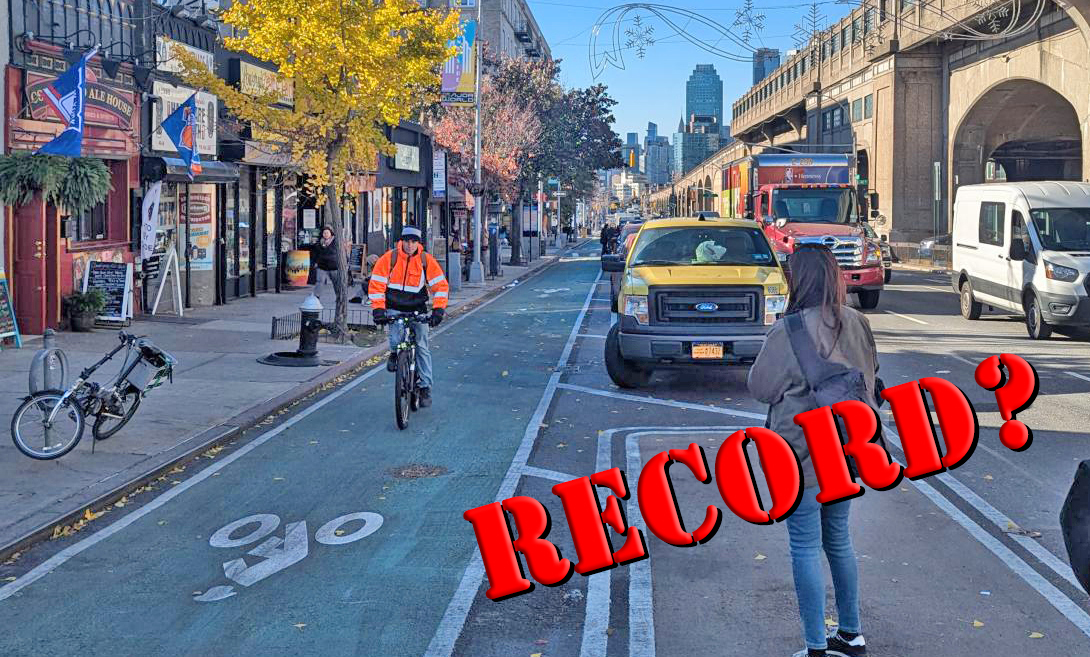Elected officials may not have a handle on how valuable New York City street space is, but the private sector sure does.
Take car-share company WaiveCar, which according to Crain's will soon set up shop in Brooklyn. WaiveCar gives customers free use of its vehicles, which are basically rolling billboards. The idea is that revenue from the ads wrapping the cars will exceed what it costs to operate WaiveCar's electric fleet. Customers are “paying us just by driving the cars," says company exec Isaac Deutsch.
In other words, with WaiveCar, you're not the customer, you're the product.
And don't forget the byproducts -- more traffic and pollution, slower buses -- all made possible by a business model that takes advantage of NYC's failure to price driving on its most crowded streets.
WaiveCar now has a deal with Douglaston Development to market its new rental tower on the Williamsburg waterfront. For one year, residents of the building, known as Level, will have access to three cars to drive at no charge for the first 12 hours. The cars will advertise apartments at Level.
As Crain's notes, it remains to be seen whether WaiveCar's business model will pencil out here:
The most lucrative places to sell advertising here also tend to be the most congested and least pleasant places to drive, Times Square being the ultimate example. These hot spots also tend to be well-served by public transportation.
But why is it even a remote possibility?
As long as motorists can use NYC's most congested streets at no charge, those streets will have appeal for completely frivolous motor vehicle trips. WaiveCar has figured out a way to benefit, while pedestrians, cyclists, bus riders, and other people in cars lose.
You can't really blame WaiveCar for taking advantage. This is the logic of underpriced roads.
Another Crain's story reports that medallion owners, taking a hit in the vehicle-for-hire business, are now counting on ads on cabs to deliver a bigger share of their revenue. Unlike WaiveCars, cabs also have a strong transportation incentive to cruise the city's busiest streets.
New York should have strong counterincentives in place to break up all this traffic, but the placard class in Albany had other ideas this session.






